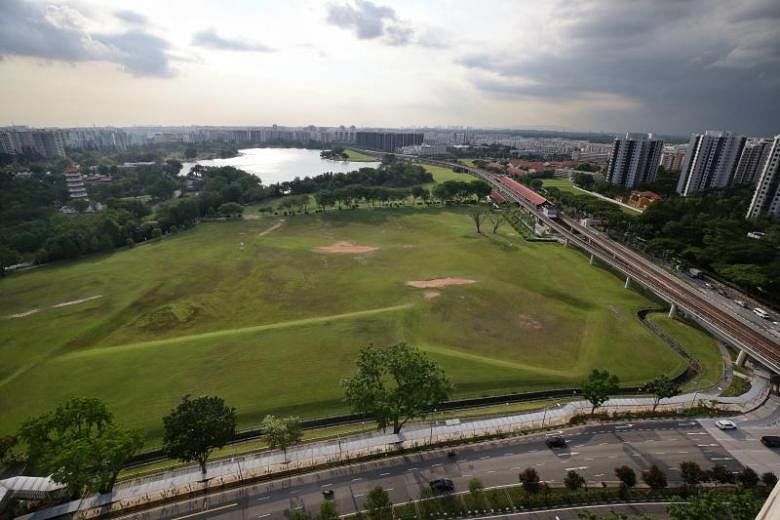SINGAPORE - Developers, investors and businesses have been invited to provide the Urban Redevelopment Authority (URA) with ideas for the Jurong Lake District, in view of the changes brought about by the Covid-19 pandemic.
URA group director for physical planning Yvonne Lim on Monday (Jan 18) said adjusting plans will allow the district to stay relevant, and "provide flexibility to meet changing needs and aspirations for more productive, safe and healthy work environments".
One idea mooted to enhance the 360ha district's attractiveness is selling larger sites with attractive option schemes, she said at a seminar organised by the Building and Construction Authority (BCA) and the Real Estate Developers' Association of Singapore.
This can give developers the flexibility to experiment with new development concepts that are difficult to realise in the city centre.
Other suggestions by developers and businesses include bringing in signature events and creating landmark developments and attractions, as well as providing Singapore's future second Central Business District with exciting food and beverage, retail and lifestyle options that are different from those available downtown.
The district, which comprises Jurong Lake and the area around Jurong East MRT station, is set to provide more than 100,000 new jobs in the maritime, infrastructure and technology sectors, as well as an additional 20,000 homes.
It will be fully developed in 20 to 30 years.
The recent termination of the Kuala Lumpur-Singapore High Speed Rail project is another change that planners have to factor in. Transport Minister Ong Ye Kung told Parliament in January that overall plans for Jurong Lake District will not be affected, though some details may need to be adjusted along the way.
Studying trends and shifts
Ms Lim said the pandemic has reinforced the need to accelerate key strategies in URA's Master Plan 2019. For instance, it has affirmed plans to develop growth districts such as Jurong Lake District and Woodlands Regional Centre to provide sustainable and suitable workspaces closer to homes.
The URA is also keeping a close eye on other changes that have been accelerated by the pandemic, such as the adoption of remote working and the growth of the logistics and e-commerce sectors, she said.
While the pandemic's impact on demand for office space remains uncertain, the URA will carefully study the various trends and shifts, and work towards sustainable design guidelines and strategies, she said.
Ms Lim pointed to how employers may prefer office designs such as open-air sky terraces and green breakout areas that could improve the health and well-being of workers.
New office models such as co-working spaces and flexible leases may become more sought after, while employees may also require larger household spaces as they work from home more.
On changing consumer habits, she said the URA is engaging developers and stakeholders on how these changes are affecting them, and exploring how to increase the efficiency of logistics and deliveries in response to the rise of e-commerce. This includes studying how regulations can better support food and beverage operators who need more cloud kitchens.
Pilots are also being developed to repurpose spaces to support last-mile consumer deliveries, she said.
Some possible ideas include designating carpark spaces as courier hubs for logistic companies to store parcels for delivery personnel, as well as mall owners and food delivery platforms collaborating to create designated food delivery collection points.


